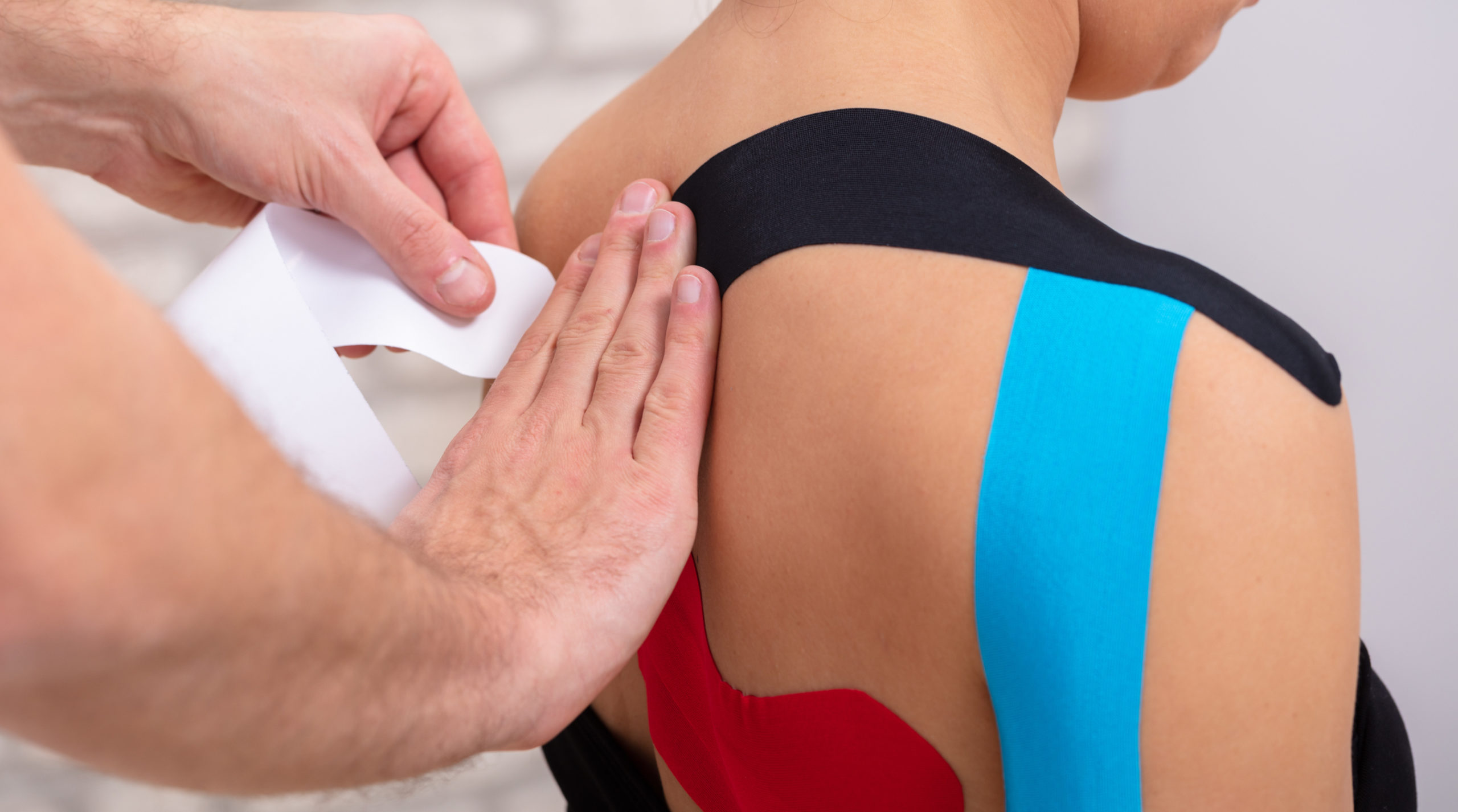The world of therapeutic taping is still fairly new to sports and athletes. While kinesiology tape has been around for decades, it only really started coming into common use after the 2008 Beijing Summer Olympics when beach volleyball athlete Kerri Walsh took to the courts with black tape plastered over her shoulder.
Since then, more research has been done and techniques have been developed using kinesiology tape to better understand its proper use. Today, there are many perceived benefits of therapeutic taping that can help you, too.
Here are five benefits of therapeutic taping that you can put to use in your everyday life.
1) Creating Space In Joints
There have been a few studies that have concluded that when a joint gets irritated, it is possible to introduce a slight amount of space into the joint to ease irritation and help reduce pain. One study investigated its use on knees, while another focused on the shoulder and its benefits. Since kinesiology tape is thought to gently lift your skin through slight tension, this is what creates the desired space to allow the muscles to recoil and shift. This could lead to less friction, and as a result, less opportunity for irritation.
Keep in mind that these studies are still fairly new, and there is likely much more research left to be completed to better understand how kinesiology tape can help with its fullest potential.
2) Increased Proprioception
Proprioception is your body’s spatial awareness. When you throw an object or kick a ball, your body’s natural built-in proprioception allows your brain to understand where those pieces of your body are relative to the rest of you. Sometimes, however, your body is not the best at doing this job, and as a result, you end up with injuries like a sprained ankle or a torn rotator cuff. Especially if those injuries have recently occurred, you are at a greater risk of reinjury or making the problem worse, since this usually means the ligaments, tendons or muscles involved in keeping your joints in place have been hyperextended, and have not yet returned to their original shape.
Kinesiology tape is an excellent way to increase proprioception when applied in problem areas. The natural tension on the tape will tell you when your body is moving in the ways you want it to. This increased awareness will not only decrease your chances of reinjury, but is a valuable tool in the rehabilitation process while completing range-of-motion exercises.
3) Re-Educating Muscles
Many people get into bad habits when it comes to using particular muscle groups. Think of those who regularly slouch in their chairs or have bad posture. Muscles have been trained into an unhealthy way of working, and it can occasionally be painful using them in the right way again.
Similar to proprioception, kinesiology tape can be used as a helpful reminder for those who are using muscle groups incorrectly. Tape can be applied to the desired muscle groups while they are in the correct positions, so that the tape feels the most comfortable while they are in a relaxed position. When a muscle group returns to its poor form, the tape stretches and gives a subtle suggestion through tension to return to its previous position. Given enough time using tape, the muscles should naturally settle into their proper positions, and the use of tape can be discontinued.
4) Increased Circulation
Since kinesiology tape is already used to provide space, it naturally follows that increased space can lead to better circulation. Inflamed muscles can restrict blood flow through constriction, and kinesiology tape can assist in providing the needed space to avoid some constriction. Swelling is also associated with a decrease in circulation, as the lymphatic system is in charge of fluid build-up in the body. While lymphatic fluid is mostly water, it also contains a few other proteins, chemicals and bacteria. Extra space under the skin means a greater opportunity for lymphatic circulation, and you will find a decrease in swelling. This often works best when used in conjunction with other treatments, including the regular application of ice.
5) Facial Protection
While the most common type of kinesiology tape is used for muscle groups on the body, there is also a specialized gentler version of the tape specifically designed for use on the face. It is typically applied on the bridge of the nose and on the cheeks, and will help reduce the impact of marking associated with wearing medical-grade face masks for extended periods of time.
Please note that these benefits are usually only achieved when kinesiology tape is properly applied. If you are unsure about how to apply kinesiology tape, it is often recommended to seek the help of a physical therapist or a personal trainer who can initially apply the tape for you. Be sure to bring along a recording device like your phone so you can watch back the application process later and better replicate it at home.
Author’s Bio
Colin Hegarty is a content writer for BreezeMaxWeb that helps businesses showcase their brand through enticing copy. When he’s not working, you can find him playing net in a local beer league or biking around the city.




